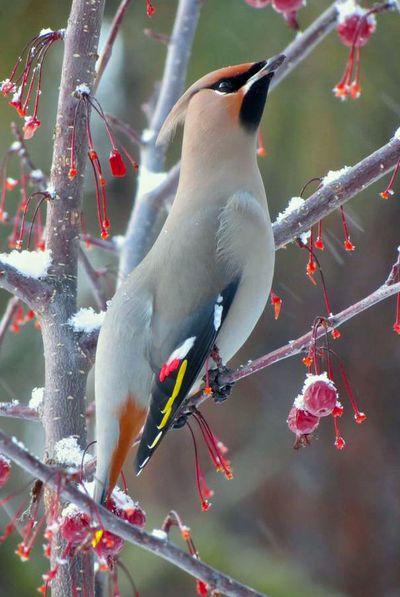Beyond feeding: Birdwatchers can create habitat in yards

Winter offers a peaceful opportunity for bird watchers to take stock of their yards.
With fewer chores to tend, we can look over the landscape like a farmer and see what’s working and what’s not. This is the time to build nest boxes and make a plan for spring landscaping to make the yard more friendly to wildlife year around.
Collectively, homeowners have huge potential to boost habitat for birds. Putting out feeders is mostly for our own enjoyment. Birds rarely lack food as much as they lack habitat – the sum of effective cover available to birds for dealing with weather, escaping predators, nesting and finding a diversity of nutrition.
Providing habitat takes more commitment than providing food, as well as the often ignored necessity of year-round water.
A perfectly manicured yard, dominated by mowed grass, barked flower beds and low maintenance tam junipers can verge on being a biological desert for birds.
Find ways to “rough it up” a little and your yard is more likely to attract house wrens to hunt in the shrub beds. That’s all it might take to fill your yard with one of the most beautiful songs in nature this spring when the season finally warms enough to open the windows.
Now’s the time to clean out nesting boxes built and put up to make up for the loss of decaying trees and other natural homes for cavity nesters. The bug-eating swallows and bluebirds will be showing up sooner than we might expect. And many birds, such as nuthatches, hang around all year. In the onslaught of bitter weather, they may take refuge in a nest box to sit out the storm.
If you’re putting out feeders this winter for year-round resident birds, keep them clean and move them occasionally to reduce the chance of exposing ground feeders to disease from the molding leftovers that fall to the earth.
Always be mindful of placing feeders where they don’t provide easy ambush points for free-running cats.
In addition to the seed feeders, put out suet feeders for the woodpeckers. Smear peanut butter occasionally in the bark of a pine tree trunk and watch the nuthatches and chickadees run the bark for the treat.
Providing food and water might help some birds better survive a severe winter weather event. But homeowners who properly landscape can step up their commitment to birds that deliver so much pleasure with their colors and calls. A dwarf crab tree here and mountain ash there, a mix of evergreen and deciduous trees plus, say, some sumac, fescue and a bird bath plus treats such as a sunflower can extend the influences of a yard and garden. Plants that bear fruit or provide seeds in the winter are an especially helpful resource to birds.
Natural habitat provides food and shelter to wild birds every month of the year whether we’re home or not.